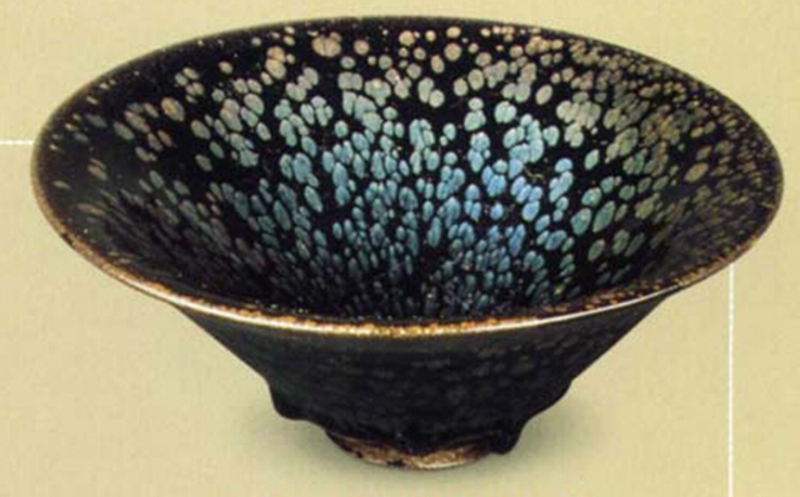
The Jianyao Jianzhan porcelain. [Photo/fujian-szwhg.chaoxing.com]
The ancient site of Jianyao is located in Houjing village, Shuiji town, Jianyang district, Nanping. It is one of the renowned kiln sites of the Song Dynasty (960-1279) and surrounded by hilly terrain. The firing technique of Jianyao Jianzhan has been recognized as a national intangible cultural heritage item under the traditional craft category.
Jianyao was one of the famous ancient kiln sites in China, thriving during the Song dynasties. Jianzhan, the most well-known product to be produced at the site, was also one of the finest tea utensils of the Song Dynasty, influencing tea culture of that era.
Jianyao products include celadon porcelain, qingbai porcelain, and black porcelain. Celadon items mainly consist of bowls, plates, pots and jars. Qingbai porcelain includes bowls, plates, dishes, bottles, and covers, dating back to the late Song and early Yuan (1271-1368) dynasties. Black porcelain, mainly bowls known as "Jianzhan" is the most well-known Jianyao product, along with a few lanterns, bowls, tall-footed cups, jars, and bottles.
Jianzhan glazes exhibit rich and vibrant colors, with representative glazes including golden black glaze, hare's fure glaze, and oil-spot glaze.
After the decline and cessation of firing at Jianyao during the Yuan Dynasty (1271-1368), it remained dormant for six to seven centuries. In 1981, a group dedicated to reproducing Jianzhan spent over two years reviving this traditional craft. In 1999, the discovery of the Jianyao site was recognized as one of Fujian's top 10 archaeological discoveries. Ceramic artisans and scientists from countries like Japan have also conducted similar experiments, which are showing promise.

Copyright © General Office of Fujian Provincial People's Government
Website Identification Code 3500000049Registration Number: 15003084
All rights reserved. The content (including but not limited to text, photo, multimedia information, etc) published in this site belongs to fujian.gov.cn.
Without written authorization from fujian.gov.cn, such content shall not be republished or used in any form.